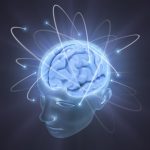Suggestion to the NIH to create an ultrastructure-quality human brain bank
Note: Because of my research developing electron microscopic imaging techniques for connectomics, I was invited to participate in the recent NIH/DOE Brain Connectivity Workshop Series discussing the possibility of mapping the connectome of an entire mouse brain. Speakers in that workshop series were all asked to submit ideas to NIH Public Crowdsourcing site on the significance and opportunity represented by such a project. I took that opportunity to write about the very long-term significance of connectomics research and to plead the brain preservation case directly to the NIH and to my fellow neuroscientists. Below is the essay that I submitted to that website. The actual version is open to the public, and I believe open to public comment, and can be found at this link (requires registration):
https://ninds.ideascalegov.com/a/dtd/Intact-ultrastructure-quality-human-brain-bank/15969-78
Intact, ultrastructure-quality human brain bank
The ultimate goal of neuroscience is to understand precisely how the dynamics of the brain’s neuronal networks gives rise to intelligence and mind. Every neuroscientist knows how difficult it has been to make significant progress toward that goal. But why has it been so difficult? A century of dedicated neuroscience research has already identified most of the key structures and molecules which determine brain function and which encode long-term learning and memory. At the individual neuron level, ion channels and receptor proteins are the key determiners of electrophysiological function. This complexity of individual neurons is considerable but manageable -we can readily simulate a single neuron’s electrophysiology when its interactions with other neurons can be neglected. Given our current recording and genetic tools, we are even well on our way toward cataloging the basic electrophysiological properties of all morphologically-defined neuronal types. But such cataloging is useless without an understanding of how the neurons work together in networks. Simply put, the brain’s sophisticated computations are chiefly a reflection of its incredibly intricate synaptic wiring, and we currently have only a very crude understanding of the wiring of the mammalian brain. This lack of knowledge of the brain’s wiring is the key impediment to neuroscience progress. A mouse connectome project is designed to directly address this central impediment. If we can obtain the complete connectome of a mouse brain it will revolutionize every aspect of how neuroscience is done, and it will dramatically accelerate our pace toward true understanding.
This series of workshops has made clear that obtaining a synapse-resolution volume image (~10 x 10 x 10 nm voxels) of an entire adult mouse brain is achievable within this decade by automating and scaling up existing electron microscopic imaging technologies. That volume image should be sufficient to obtain the complete map of (chemical) synaptic connectivity -the basic definition of a connectome. It will also contain the precise morphologies of all neurons, sufficient to identify their elsewhere-cataloged electrophysiological properties. Such a circuitry map will lay bare the computational architecture of the mouse brain. It will guide many decades of targeted experiments which, I firmly believe, will ultimately result in a deep and satisfying understanding of how general mammalian intelligence arises from neuronal computations.
Beyond reading off the principles of general mammalian intelligence, such a comprehensive map will also likely contain, in coded form, the specific intelligence of the mouse whose brain was mapped, including its unique learned behaviors and memories. Research strongly suggests that most long-term learning and memory is encoded as changes in synaptic connectivity -the addition and elimination of synapses and changes to the functional strength of existing synapses (Bailey, Kandel, and Harris 2015; Josselyn, Köhler and Frankland 2015; Lamprecht and LeDoux 2004; Martin, Grimwood, and Morris 2000; Poo et al. 2016; Mayford, Siegelbaum, and Kandel 2012). 10 nm voxel resolution is sufficient to not only identify all synapses but also to measure the ultrastructural features of synapses that are known to be correlated with their functional strength (e.g. spine volume, PSD area, number of pre-synaptic vesicles) (Kasai et al. 2003; Holtmaat and Svoboda 2009). Once the general computational architecture of the mouse brain is fully understood (a feat that will itself take many decades at least), this mouse’s specific synaptic connectivity could potentially be decoded to read off learning and memories specific to this particular mouse. For example, the precise connectivity of the visual and hippocampal system should, in principle, allow one to determine what particular ensemble of hippocampal neurons would have been activated in the living mouse to represent that the mouse was at a particular point in a learned maze. It is even conceivable that a whole brain simulation, based on this mouse’s synaptic connectivity, could be made to control a virtual mouse to expertly navigate a ‘remembered’ maze. To put it bluntly, if the mouse connectome project’s map is sufficiently accurate, an attempt will eventually be made to ‘upload’ the mind of that particular mouse. If successful, it will have laid the groundwork for an eventual attempt to upload a human mind. And even if it is not successful, the attempt will have likely identified what elements are lacking. For example, the need to also map ion channel densities on particular classes of neurons or receptor protein densities on particular classes of synapses. Such knowledge will set the stage for further development of staining and imaging technologies, and more attempts, until success is eventually achieved.
I want you to try to imagine that day, perhaps five decades from now, perhaps many more, when the first successful upload of a mouse brain is declared. What will the consequences be? It will almost certainly spark a race to upload the first human mind, a feat that will require scaling up whatever imaging technology that was successful for the mouse a thousandfold. There will be a call for volunteers, reminiscent of NASA’s Project Mercury astronaut selection, who are willing to risk their lives and much more to possibly be the first human mind upload.
It will be clear to all who volunteer that, if selected, their biological life will come to an end. A project of such cost and monumental importance would accept no less than a perfectly preserved brain. Just as it did for the mouse, this will mean perfusion of the living human with aldehyde fixatives. What later staining and tissue preparation steps are used will depend on the imaging technology, but the first step will almost certainly be perfusion fixation with aldehydes. Within seconds, vascular perfusion with aldehydes stops all metabolic decay processes and locks proteins and most other classes of biomolecules in place while preserving their identities (McKenzie 2019). This is why aldehyde fixation has, for decades, been the standard used for imaging ultrastructural details in samples thicker than a few hundred microns.
Will these future neuroscientists be successful? Given the scale, complexity, and many unknowns, it will surely require many additional decades and probably a string of failed attempts. But it seems likely that humanity will eventually succeed even if it requires centuries. The potential benefits of uploading are simply too great: an end to disease and aging, an overcoming of the biological limits to our intelligence, an ability to explore new realms of mental experience, space travel at the speed of communication, and much more. This is the promise of uploading. There is nothing in our current neuroscientific understanding that suggests that mind uploading is impossible. To the contrary, all of our current theories of the mind are computational. If uploading is possible at all, it is unlikely that humanity will ever stop trying to achieve it. And once achieved, the process will, like all our previous technologies, be replicated and made more efficient until it is available to all of humanity.
So what does this future speculation have to do with brain banking? Recently a new brain banking technique was developed called Aldehyde-Stabilized Cryopreservation (ASC) (McIntyre & Fahy 2015). ASC allows intact, aldehyde-fixed brains (and potentially whole central nervous systems) to be cryostored indefinitely at -135 C in a vitrified state. This cryostorage was shown to be reversible back to the aldehyde-fixed stage and therefore compatible with a wide range of imaging techniques. For example, the technique was used to cryostore a whole, intact pig brain at -135 C. That brain was subsequently rewarmed and tissue samples were stained and embedded for electron microscopy. A survey of different regions of the brain using focused ion beam scanning electron microscopy (FIB-SEM) was used to verify that ultrastructure was preserved across the entire intact brain. The FIB-SEM volumes acquired were of sufficient quality to clearly show the ultrastructural details of synapses and to support reliable connectomic tracing.
This ASC advancement is both mundane and profound. Mundane because ASC is simply a combination of two well-understood techniques –aldehyde perfusion fixation and cryostorage. It is profound because it means that anyone today could undergo the first step (perfusion fixation with aldehydes) of an uploading procedure that might only be completed centuries in the future. Their near-perfectly preserved brain being stored unchanging for those centuries at low temperature, ready to be warmed and imaged when the neuroscience understanding and imaging technology to upload them has been developed.
This chain of events is obviously highly speculative. It may prove to be impossible to upload a mind by scanning an aldehyde preserved brain. We might discover that our current neuroscience theories are grossly inaccurate and that the mind is not a product of neuronal computations. We may discover that learning and memory are not decodable by mapping synaptic connectivity, mapping neuronal and synaptic ultrastructure, mapping protein distributions, and mapping all the other physical features of the brain known to be preserved by aldehyde fixation. There is so much that we currently do not know about the brain that we must humbly acknowledge that the entire endeavor may ultimately prove impossible. However, we should also acknowledge how far we have already come in our quest to understand the brain and recognize that almost all of our current theories suggest that it will be possible.
So what exactly am I suggesting? I am suggesting that the NIH today develop a new type of brain bank, one that stores intact human brains (or better, intact central nervous systems) using a technique, like ASC, which is known to provide the highest-quality ultrastructural and molecular preservation. The brain bank should be designed so that it will be compatible with the widest possible range of future imaging technologies. It is a fact that in laboratory imaging experiments, in order to obtain the highest-quality preservation, the animal must undergo a well-controlled perfusion fixation with aldehydes starting prior to their death. The same is likely to be true in humans, so the NIH should also put in place procedures for terminal patients to donate their brains as part of an elective euthanasia procedure which includes a well-controlled perfusion fixation with aldehydes. Medical ethics guidelines should be designed to ensure that all terminal patients have given fully informed consent to undergo such a euthanasia procedure and to donate their brain to the bank. Any terminal patient that would otherwise have the right to choose euthanasia, as allowed by state and federal laws and as approved by their doctor, should also have the right to donate their brain to this bank.
As with traditional donations to brain banks, there should be no charge to the patient, and it must be made clear to the patient that absolutely nothing is being promised beyond a best-efforts attempt to obtain the highest quality of preservation. Their brain may be used for near or far-term medical research resulting in its ultimate destruction. But it may also be stored indefinitely as part of a time capsule left to future generations –future generations who may just have the inclination, knowledge, and technology to scan and simulate their stored brain, uploading it to control a virtual or robotic body.
In this sense, a terminal patient donating their brain to such a bank is grasping at one final hope for continuing their existence in the distant future. I know several individuals facing terminal illnesses who would find great comfort in donating their brain to such a bank. One such patient is Max Li, facing terminal cancer, who recently posted a video (
) movingly explaining his desire to preserve his brain and explaining how such an option would give a measure of hope and purpose to many terminal patients like him. I believe it is well within the mission and ability of the NIH to create such a high-quality human brain bank and to put in place the procedures necessary so that every terminal patient has the option to donate his or her brain to such a bank.
In conclusion, I am simply suggesting that the NIH take seriously what neuroscience has already discovered, and take seriously the long-term implications. Neuroscience has discovered that the mind is a product of neuronal computations and that learning and memory are encoded physically in structures and molecules that are known to be preserved by aldehyde fixation. As discussed in these workshops, it is likely that in only a few years we, as a field, are going to perfuse a mouse with aldehyde fixatives and start mapping its entire synaptic connectivity. Our skill at imaging brains at the ultrastructural and molecular levels is increasing every year. Given this context, it would be irrational to assume that uploading a mind from an ASC-preserved brain will forever be impossible. Instead, the prospect should be taken seriously and planned for.
I am suggesting that the NIH take seriously its duty to try to lengthen life and reduce the suffering of terminal patients by respecting their end-of-life wishes. I am one of a growing number of scientifically-literate citizens who desire quality brain preservation as an end-of-life option. It is within the ability of the NIH to provide us such an option in the form of this new brain bank, along with whatever new hospital procedures and regulations are required to ensure that we get the highest-quality preservation.
Bailey, C. H., Kandel, E. R., & Harris, K. M. (2015). Structural components of synaptic plasticity and memory consolidation. Cold Spring Harbor perspectives in biology, 7(7), a021758.
Holtmaat, A., & Svoboda, K. (2009). Experience-dependent structural synaptic plasticity in the mammalian brain. Nature Reviews Neuroscience, 10(9), 647-658.
Josselyn, S. A., Köhler, S., & Frankland, P. W. (2015). Finding the engram. Nature Reviews Neuroscience, 16(9), 521-534.
Kasai, H., Matsuzaki, M., Noguchi, J., Yasumatsu, N., & Nakahara, H. (2003). Structure–stability–function relationships of dendritic spines. Trends in neurosciences, 26(7), 360-368.
Lamprecht, R., & LeDoux, J. (2004). Structural plasticity and memory. Nature Reviews Neuroscience, 5(1), 45-54.
Mayford, M., Siegelbaum, S. A., & Kandel, E. R. (2012). Synapses and memory storage. Cold Spring Harbor perspectives in biology, 4(6), a005751.
Martin, S. J., Grimwood, P. D., & Morris, R. G. (2000). Synaptic plasticity and memory: an evaluation of the hypothesis. Annual review of neuroscience, 23(1), 649-711.
McIntyre, R. L., & Fahy, G. M. (2015). Aldehyde-stabilized cryopreservation. Cryobiology, 71(3), 448-458.
McKenzie, A. (2019). Glutaraldehyde: A review of its fixative effects on nucleic acids, proteins, lipids, and carbohydrates.
Poo, M. M., Pignatelli, M., Ryan, T. J., Tonegawa, S., Bonhoeffer, T., Martin, K. C., … & Stevens, C. (2016). What is memory? The present state of the engram. BMC biology, 14(1), 1-18.







